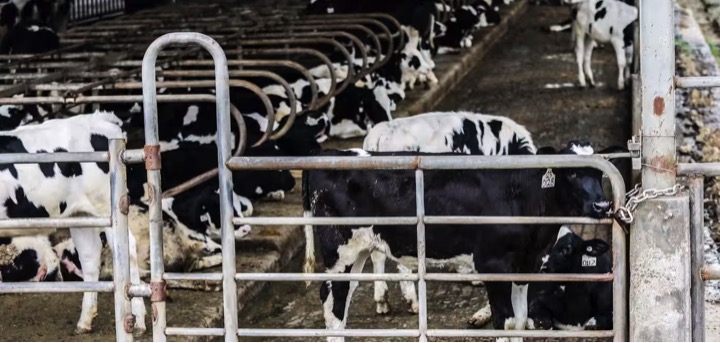More emphasis on quality and growing consumption trends in Southeast Asia’s dairy industry have attracted a bevy of private equity (PE) companies to the sector, many of whom are raising their bets in the hopes of reaping multiples in the years to come.
Dairy products, which were once considered good-to-have by Southeast Asian consumers, are today must-haves. Favorable demographics, a growing middle class and higher discretionary spending have propelled dairy consumption trends in emerging markets.
“As per capita income of the people grows, they will go toward healthier products to satisfy the energy needs,” said Amit Kunal, managing partner of Growtheum Capital Partners, which has made two significant dairy sector investments in Vietnam and Indonesia this year alone.
In April, Growtheum announced an investment of $100 million in Vietnam-based International Dairy Products (IDP). Last month, the PE firm injected $70 million into Indonesia’s KIN Dairy.
“While there has been a bit of slowdown in the other consumer categories, this segment continues to grow,” Kunal said.
Dairy businesses have seen PE investments in the past as well. Dymon Asia Private Equity’s funding in The Holstein Milk Company and Southern Capital Group’s acquisition of F&B Nutrition in Malaysia in 2018 and 2019, respectively, were some prominent deals in the region. Meanwhile, TPG and Northstar bought agrifood company Japfa’s consumer dairy business in Southeast Asia three years ago.
Today, PE players are bullish on the sector, predominantly on the back of Southeast Asia’s growing population and increasing wealth.
Andy Ho, chief investment officer of VinaCapital, a past investor in Vietnam’s Vinamilk and IDP, is particularly excited about the market of about 100 million people. “The [gross domestic product] per capita right now is about $4,000. That’s on the low side, so there’s still a lot of room to grow,” he said.
Demand has been met by a wide range of quality products, from ultra-high temperature milk to yogurt and cheese, which makes the sector more attractive, according to Martin Lemoine, head of the Asian Development Bank’s (ADB) food and agribusiness investment team.
ADB acted as an anchor investor in Cimory’s IPO on the local exchange in 2021. The bank is also a limited partner in Growtheum.
“As an investor, it’s always a satisfying thing that the company you support uplifts the nutritional needs of the country,” Kunal said.
Indonesia’s dairy market revenues reached $5.1 billion in 2021, representing a compound annual growth rate of 12.3% between 2016 and 2021. The market is expected to exceed $7 billion by 2026, according to Marketresearch.com.
Cimory has been a beneficiary of this rapid growth, said Brahat Joshi, chief financial officer at the company. “Historically, Indonesia has lagged behind its ASEAN counterparts in terms of dairy consumption, but as income levels steadily rise, we are witnessing a notable uptick in the demand for dairy products.”
In Vietnam, there were more than 200 dairy producers at the end of 2021, according to Research and markets
The research platform estimated that the country’s dairy revenue nearly doubled from $4.4 billion in 2017 to $8.4 billion in 2021. Milk consumption per capita in Vietnam was only 28 liters in 2021 — lower than Thailand’s 35 liters and Singapore’s 45 liters — but was anticipated to reach 40 liters by 2030.
There are multiple opportunities in the dairy sector in Southeast Asia and the wider Asia-Pacific region, and ADB is looking at several new investments, Lemoine said.
Despite the huge growth potential, supply chain issues continue to hinder dairy businesses in the region.
Farming practices in Indonesia are still fragmented, said Joshi. In addition, underdeveloped logistics infrastructure hampers nationwide product distribution.
“For setting up a farm, you need a vast tract of land, favorable weather conditions and a good water table. It also requires heavy capital investment and the expertise to manage the fund,” Kunal said. “Maybe that is [why] in the past decade, fewer investments in the sector have happened.”
Countries like Indonesia and Vietnam are also net importers of milk. In Vietnam, less than half of demand was met by domestic production.
“The [Vietnamese] dairy market has matured and is getting very big. Many want to invest,” said VinaCapital’s Ho. However, because of the heavy reliance on imports, he stressed the question of the strategic value and growth over the next five to 10 years.
“When we invest, we need to deliver 15% to 25% return every year for the next three to five years. It’s hard to see these bigger companies growing at that profit,” he said.
VinaCapital first invested in Vinamilk nearly two decades ago when the dairy company was worth around $400 million and exited about a decade later. Now, Vinamilk is a $6.4 billion company by market capitalization.
VinaCapital also invested in IDP in 2014 and exited in 2019.
Growtheum’s Kunal said, “The sector is still very wide open. If someone comes with a good, interesting quality product, the demand will be there.”
Meanwhile, ADB’s Lemoine sees the bank’s role in helping dairy companies with sourcing quality raw milk and reducing the carbon footprint in dairy production, leveraging its investment experience in the sector in other countries such as China, Bangladesh, Azerbaijan and Mongolia.
The ADB has recently invested in convertible notes of a Vietnamese aquaculture company for the production of seaweed that can help decrease methane emissions of dairy cows.
Source : Asia. Nikkie October 17th 2023 by NGUYEN THI BICH NGOC, DealStreetAsia

